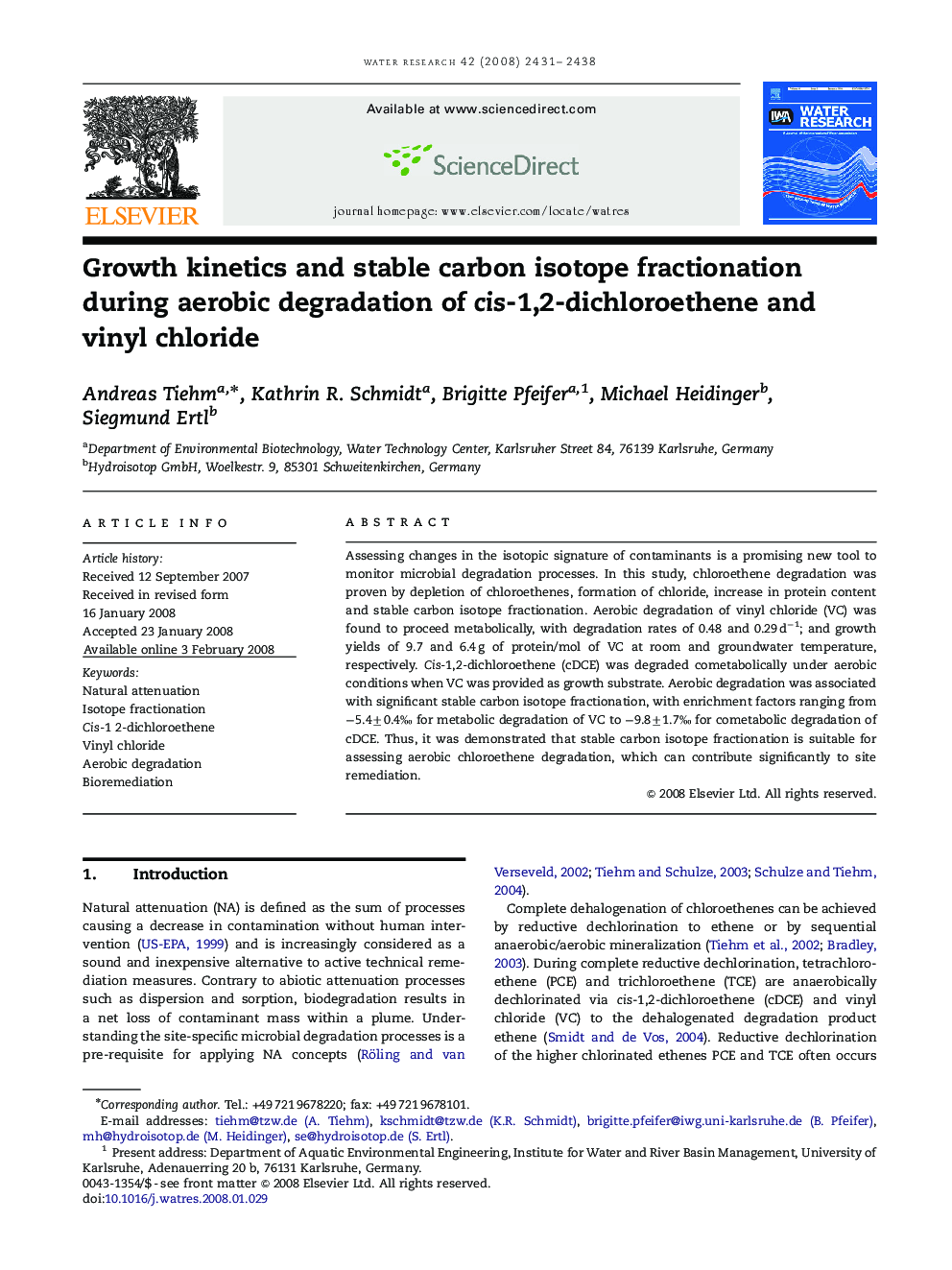| Article ID | Journal | Published Year | Pages | File Type |
|---|---|---|---|---|
| 4484753 | Water Research | 2008 | 8 Pages |
Assessing changes in the isotopic signature of contaminants is a promising new tool to monitor microbial degradation processes. In this study, chloroethene degradation was proven by depletion of chloroethenes, formation of chloride, increase in protein content and stable carbon isotope fractionation. Aerobic degradation of vinyl chloride (VC) was found to proceed metabolically, with degradation rates of 0.48 and 0.29 d−1; and growth yields of 9.7 and 6.4 g of protein/mol of VC at room and groundwater temperature, respectively. Cis-1,2-dichloroethene (cDCE) was degraded cometabolically under aerobic conditions when VC was provided as growth substrate. Aerobic degradation was associated with significant stable carbon isotope fractionation, with enrichment factors ranging from −5.4±0.4‰ for metabolic degradation of VC to −9.8±1.7‰ for cometabolic degradation of cDCE. Thus, it was demonstrated that stable carbon isotope fractionation is suitable for assessing aerobic chloroethene degradation, which can contribute significantly to site remediation.
